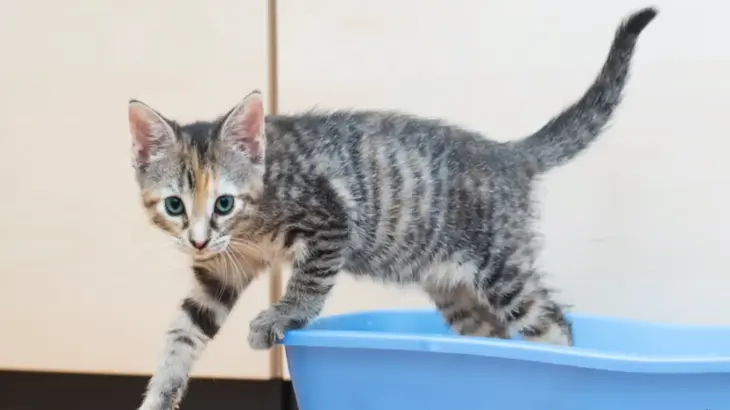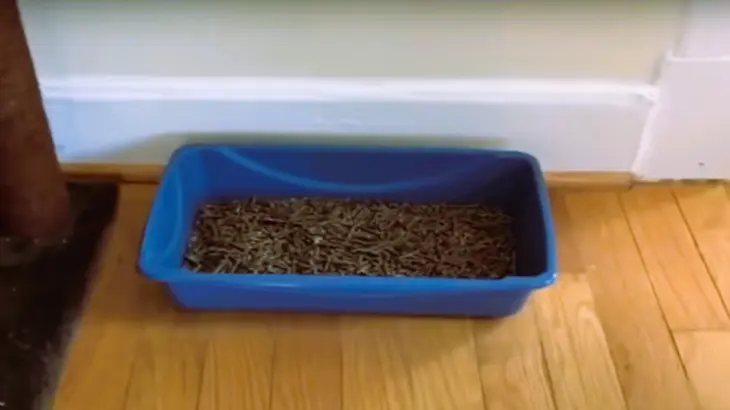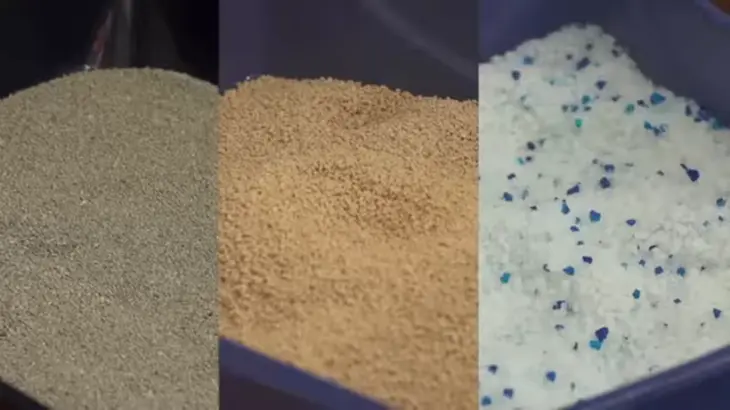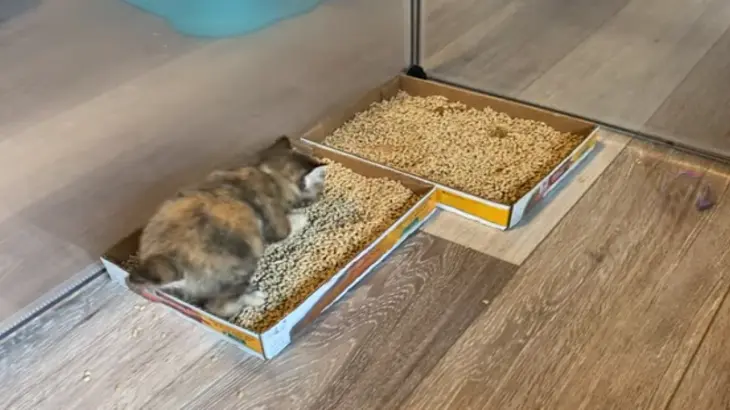How To Litter Train A Kitten- Create a Clean Cat Environment
Litter training helps your kitten stay clean. Learn techniques, choose the right supplies, and create a positive environment for successful litter box use.
By: Elizabeth Rikas

The information in this article is intended to educate cat parents and is not a substitute for veterinary guidance. In case of any concerns about your cat’s health, please talk with your veterinarian.
Litter training is essential for keeping your kitten and home clean, but it also requires patience and understanding. While some kittens may instinctively use a litter box, most need proper guidance. The key to successful litter training lies in having the right supplies, creating a comfortable environment, and tailoring your approach to your kitten’s unique personality.
Though the process might seem challenging at first, my step-by-step guide, drawn from over a decade of experience, will help you navigate common obstacles with ease.
Interesting Read: Why does my cat sleep between my legs?
Also cat owners often wonder about the best litter box options, placement, and how long it takes to fully train a kitten. This article will provide all the answers you need. By carefully following each step, you’ll set your kitten up for success.
Understanding The Basics Of Kitten Litter Training
Before discussing the specifics of litter training, it’s essential to understand that kittens have an instinct to bury their waste. This instinct makes the litter training process relatively straightforward compared to other pet training tasks. However, patience and consistency are key to success.
When To Start Litter Training Your Kitten
Introduce your kitten to the litter box when it’s around a month old (3 to 4 weeks). At this stage, kittens begin to eliminate on their own and can start learning to use the litter box. If your kitten is older, don’t worry—the training process is the same.
How To Select the Best Litter Box For Your Little Kitty

Cats need a good litter box to pee and poop. Picking the right one keeps your cat happy and your home clean. You can pick the right litter box based on:
Also Read: Down syndrome in Cats
Size
Kittens may be small now, but they grow quickly. It’s wise to choose a litter box that will suit them as adults. A good rule of thumb is to select a box that’s about one and a half times the length of your fully grown cat.
Open Vs. Covered Litter Boxes
For kittens, an open litter box is often the best choice. It allows easy access and doesn’t confine odors, which might deter a kitten from using it. As your cat grows, you can transition to a covered box if desired.
Number Of Litter Boxes
t’s recommended to have more litter boxes than cats. For instance, if you have one kitten, provide two litter boxes. This ensures your kitten always has a clean place to go.
Also Read: Kitten not drinking water
Selecting The Right Type Of Cat Litter
The type of litter you choose can greatly influence whether your kitten takes to using the litter box. Cats can be quite particular about their litter, so selecting the right one is crucial. Here are a few key considerations:

Clumping Vs. Non-Clumping Litter
Clumping litter is often preferred as it’s easier to scoop and maintain. However, some kittens may try to eat it, which can cause digestive issues. Non-clumping litter is safer for very young kittens.
Scented Vs. Unscented Litter
Although scented litter may seem like a good idea to mask odors, many cats actually prefer unscented options. A strong scent can be off-putting to kittens and may discourage them from using the litter box.
Texture And Particle Size
Kittens generally prefer fine-grained litter that’s gentle on their paws. Avoid litters with large granules or sharp edges that might be uncomfortable for your kitten.
Also Read: Why do cats gag?
Litter Box Placement

When training your kitten, placing the litter boxes in the right locations is crucial. Here are some simple tips to help you get it right:
Distribute The boxes In Different Locations
Avoid placing all the litter boxes in the same area. If they’re too close together, it essentially becomes one large box, which can be problematic, especially if you have multiple cats.
Keep Boxes In Open Areas
Do not to put the boxes in closets or tight corners. Cats don’t like feeling stuck when they’re using the bathroom.
Make Sure There’s Light
Cats have good night vision but still need some light to locate their litter box. If the room is very dark, use a small night light. Even a modest amount of light can help them find and use their box easily.
Choose A Quiet Spot
Put the litter box where it’s quiet. Too much noise or movement might distract your kitten when they need to go.
Have Boxes On Every Floor
Put a litter box on each floor of your home. This way, your cat can always find a box nearby when it needs to go, no matter where it is in the house.
Accessibility
Don’t make your kitten travel too far to find a litter box. Just like us, cats prefer not to make a long journey to use the bathroom! Keeping the litter box easily accessible will help your kitten learn quickly and keep your home cleaner.
Steps To Litter Train Your Kitten
Now that you’ve set up a great spot for your cat’s litter box, it’s time to show them how to use it. Let’s begin guiding your cat to their new bathroom.
1. Show Your Kitten The Litter Box
After your kitten eats, sleeps, or plays for about half an hour, put it in its litter box. This practice encourages them to use the box in a timely.
2. Demonstrate Scratching Motions
Help your kitten learn to use the box. Take their front paws and show them how to move the litter around.
3. Praise And Reward
When your kitten uses the litter box correctly, praise them and offer a small treat or reward. Positive reinforcement encourages them to continue using the box.
4. Maintain A Consistent Routine
Keep the litter box in the same location and maintain a regular feeding schedule. Consistency helps kittens develop good habits more quickly.
5. Clean The Litter Box Regularly
Clean the litter box daily to remove soiled litter, and wash the entire box thoroughly once a week. Kittens prefer a clean environment and are more likely to use the box consistently if it’s kept fresh.
Common Challenges In Kitten Litter Training
Teaching your kitten to use the litter box can occasionally be challenging. Here are some common issues you might encounter during litter training:
Accidents Outside The Litter Box
If your kitten pees or poops outside the box, clean it up well. You can avoid the smell by using a special cleaner. This stops your kitten from going to the same spot again.
Reluctance To Use The Litter Box
If your kitten doesn’t want to use the potty box, try changing the kind of litter you use or moving the box to a new spot. These changes might help your kitten feel better about using the box.
Playing In The Litter Box
It’s not uncommon for kittens to view the litter box as a play area. If this occurs, provide more interactive toys and playtime to redirect their energy.
How To Clean Your Cat’s Litter Box
Cats prefer clean spaces for their bathroom needs, much like we do. Properly maintaining their litter box is crucial for keeping your cat happy and healthy. Before discussing the cleaning techniques, let’s explore the various types of cat litter you can use:
Different Types Of Litter
There are two primary types of cat litter, each requiring different maintenance. One type, typically made of paper or similar absorbent materials, needs to be replaced entirely after each use. These litters quickly soak up moisture but require frequent disposal.
The other type, often composed of small clay granules or crystals, allows you to scoop out the soiled areas and change the litter less frequently. This type can be used for a longer period and may offer cost savings over time.
Cleaning Steps
- Use warm, soapy water to wash the box.
- You don’t need fancy cleaners.
- Clean the box often to keep it fresh.
What To Avoid
- Don’t use cleaners that smell strong. Cats don’t like strong smells.
- Stay away from harsh cleaners or essential oils. They might hurt your cat.
Self-Cleaning Boxes
- You can buy litter boxes that clean themselves.
- But be careful! Some cats might get scared of the noises these boxes make.
It is important to note that cats like using a clean box, so ensure it stays tidy.
Tips For Long-Term Litter Box Success
Maintaining a clean litter box is essential for encouraging good habits. Here are some simple tips to ensure your cat continues to use the litter box happily for the long term.
Regular Vet Check-Ups
Watch how your cat uses its litter box. If it suddenly starts using it differently, it might mean it’s sick. If so, schedule regular veterinary check-ups for your feline companion to resolve health issues early.
Gradual Changes
When you want to change your cat’s litter, do it slowly. If you’re changing the litter, mix the new with the old. If you’re getting a new box, put it next to the old one. This helps your cat get used to the new things bit by bit.
Multiple Litter Box Locations
In multi-level homes, place litter boxes on each floor to ensure your cat always has convenient access.
Monitor For Stress
Significant changes in the household, such as moving or introducing new pets, can affect litter box usage. Be patient and provide extra attention during these times.
Frequently Asked Questions
Conclusion
Training your kitten to use the litter box is a vital part of cat ownership. By applying these strategies and staying positive, you’ll successfully litter train your kitten while deepening your bond with your new feline companion. Consistent teaching and encouragement will help your kitten adapt to using the litter box. Remember, each kitten is unique, so patience and consistency are key to a successful training process.

About the Author
Elizabeth Rikas
Elizabeth is a passionate advocate for feline health and well-being, drawing from her years as a dedicated pet parent to three cats—Gypsy, Swan, and Alfred—and her invaluable experience volunteering at animal shelters. A seasoned writer with a lifelong love for cats, Elizabeth began sharing her insights in her teens and has since contributed extensively to platforms focused on feline care. Through her expertise and heartfelt dedication, she empowers pet owners with practical advice and research-backed knowledge to nurture their furry companions.
